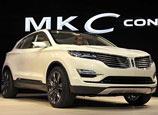
Many difficulties
Even if the deal gets the green light from the government, there are still many hurdles, analysts said.
They noted that major problems include the lack of maturity in China's new energy vehicle market, scarce charging stations, higher prices for the vehicles, limited driving range for electric cars and the safety of the batteries. Market data shows that only a few thousand electric cars were sold in China last year.
Yet Zhu Bin, an auto analyst with LMC Automotive, noted "more car buyers in China will go after diversified and individualized products, so the opportunity for the Saab brand is there".
"But it surely cannot win the market with a single 9-3 car, which is sort of an old model," he said, questioning whether NEVS has sufficient capital to invest in new technologies and new, attractive products.
"The auto industry is money consuming," he noted.
In addition to the current Saab 9-3 model, NEVS also bought rights to the Phoenix platform, a future-generation Saab vehicle, when it finalized its acquisition last year.
But according to Alfred Tian, an independent analyst who has followed the case closely, only about 65 percent of the R&D work on the Phoenix platform had been finished when Saab went bankruptcy.
"It would still require huge investment and about two years to finish the work and roll out a brand new model based on the platform," Tian said.
NEVS said the company is now studying the feasibility of beginning production of the last-produced Saab 9-3 model in the second half of this year. The first electric vehicle model is planned for launch in early 2014.
"It's not easy to meet the schedule, as most of the former suppliers and dealerships for Saab have closed down and some changed to serve other brands," Tian said, noting that in the industry it usually takes at least 18 months to investigate and certify a new supplier.

















 Extinction of river dolphin: What does it mean for the Yangtze River?
Extinction of river dolphin: What does it mean for the Yangtze River?


![]()
